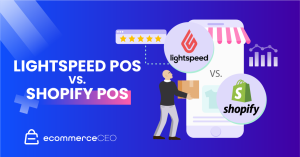The digital shelf is far more than just the ecommerce channels. Digital touchpoints have percolated into every channel. Social media added buy boxes; branding permeates across various styles of online content; consumers use buy online, pick up in store (BOPIS); and shoppers research on their phones as they browse through brick-and-mortar stores.
According to a Bazaarvoice consumer study, 82% of consumers consult their phones on purchases they are about to make in store.
More important than ever, brands must transition to a digital-first omnichannel organization to meet consumers where they are at and at the moment of inspiration for purchase.
Chris Parsons, president of the Americas for the Mayborn Group, shared the ways in which his organization is demolishing silos and reshaping itself for the new digital-first consumer journey in a recent webinar. Here are his takeaways.
Redefine Your Organizational Structure and Processes
The strategies and processes of the last decade are not dead, but they must be altered and adapted for today’s commerce. Marketing for exposure and waiting on those returns is no longer the blueprint to success.
Brands should still deploy many of these traditional marketing strategies and philosophies, but doing so within the lens and the perspective of the changing ecommerce landscape is also critical.
The first step is ensuring that you have an ecommerce or digital-focused team. Next, merging that team with marketing and sales is imperative, with an eventual goal to integrate within the rest of your organization. Should these teams remain siloed, your brand will stall out with trickier knowledge transfer and conflict while working towards separate goals and very different performance indicators.
Brands should employ an approach across sales, marketing, and product development that embraces testing and responding to feedback. Developing a precise plan for your products and campaigns will take years, so firing out options and testing the results against the marketplace can get you to your goals faster.
These organizational process and structure changes can take a while to implement, especially culturally. Leaders must reinforce to their teams across the organization that the digital shelf is the way forward and grant permission to free teams of archaic practices.
Along the same lines, Parsons needed to have tough conversations about letting go of older strategies and tactics that might have been performing well but didn’t align with the new organizational structure.
“How you make that shift is always the tension point,” notes Parsons, and can very well be the factor that determines the ultimate success of the new organizational design. Set up your team’s goals and performance metrics with the intent to enact this structural change.
Focus on Metrics That Drive Digital Transformation
Mayborn recommends that KPIs need to shift from output-oriented to leading indicator-oriented for digital commerce teams. “You need to pivot from historical KPIs to ones that meaningfully change the direction of your travel,” says Parsons.
Your goals and performance indicators must be the guideposts for the way your team runs to become more digitally mature. Create real, tangible metrics that are leading indicators for what should happen down the line, instead of just outputs in the short term.
Move away from historic, vanity metrics such as awareness and instead focus on success metrics like winning the buy box online.
As Parsons puts it, “awareness is not conversion, and it’s not the buy box, and it’s not the digital shelf any longer.”
Don’t miss out on opportunities such as building a brand on Amazon, long-term investments in highly visible digital ads, or social media exposure just because they may not hit historically important indexes like margins or return on advertising spend.
Data Is King of the Digital Landscape
Traditionally, data collection has been a siloed effort based on the respective nature of each marketing or digital team. For example, Parsons notes that Nielsen data has never been synthesized and centralized with other digital consumer data to paint a fuller picture of consumer habits.
To be an omnichannel brand, you must take an omnichannel view of your organization. This starts with the data. If brands keep their first and third-party datasets separate, they cannot understand the full picture of their current conditions.
Brands must methodically look at the data in a complete picture and see the interactions that are occurring across channels. Focus on the highest performing categories that drive your revenue and find what is working on one channel that could aid another.
Enhance your products through data, better search engine terms, product offerings, and reviews.
Revenue Opportunity With Consolidations Has Changed
Many brands find revenue growth through mergers and acquisition. But the way brands acquire companies has changed because of digital metrics — as brands cannot just manufacture a competing product and stick it on their shelves.
Digital environments require a lot of intellectual property management. Online brands have huge databases, influencer communities, thousands of positive product reviews, and other differentiating assets that drive conversion.
Take these assets into account and plan for them directly when consolidation opportunities become a realistic part of your revenue growth strategy.
Education Is the Key to Success Going Forward
Becoming a digital-first organization takes a lot of change — culturally and structurally. Keep in mind, those in decision-making positions may not have been brought up in the digital world. But more often than not, people want to learn and education is the most important tool you have.
Understanding what you know and what you do not know is crucial. Leaders can employ some humility where needed and learn from colleagues around them, whether that is peers, external consultants, or people five rungs below on the org chart.
Anyone can teach and anyone can learn. This is an important perspective to take both internally and with your consumers.
These steps in becoming a digital-first organization take time and patience, but they are the crucial foundation to competing in this new digital-first world. Today’s consumer is digital, even when they are in your physical store.
Embracing the steps to becoming a digital-first organization will keep your customers engaged and your business growing.
Watch our on-demand webinar, “How to Transition to a Digital-First Omnichannel Organization,” for more information on becoming a digital-first and omnichannel organization.



